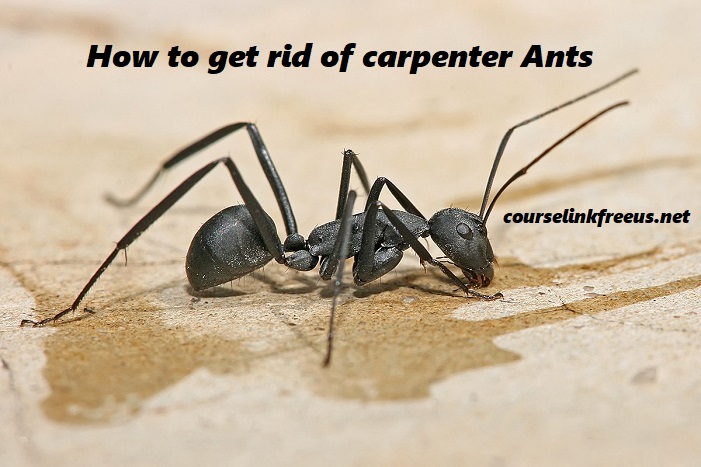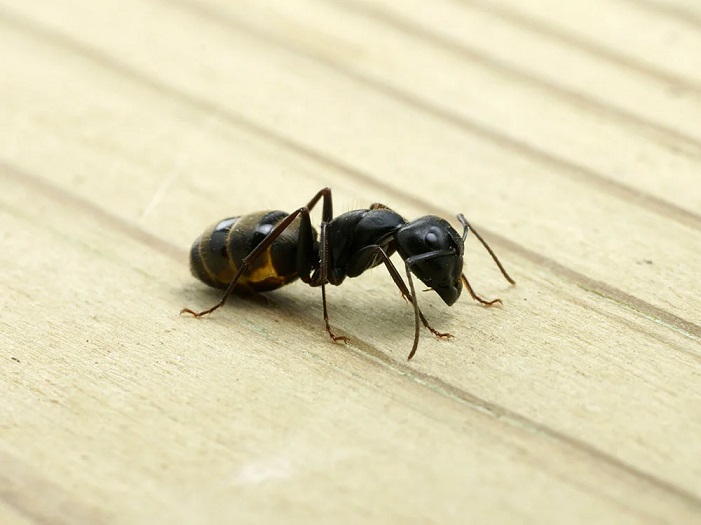How I Got Rid of Carpenter Ants: The Ultimate Step-by-Step Guide

Carpenter ants can be a nightmare. Trust me, I’ve been there. These tiny intruders don’t just invade your space—they chew through wood, leaving behind damage that can quickly spiral out of control.
After battling them myself, I’ve learned exactly what works (and what doesn’t). If you’re facing a carpenter ant problem, here’s how I got rid of them for good—and how you can too.
Step 1: Identify the Problem

The first thing I did was confirm it was carpenter ants. These ants are larger than most and often black or reddish-brown. If you see sawdust-like shavings near wood structures or hear faint rustling noises inside walls, it’s likely carpenter ants. They don’t eat wood like termites but carve through it to build their nests.
Step 2: Find the Source
It’s crucial to locate the nest. For me, this meant following the ant trails. Carpenter ants usually travel between their food source and their nest. I found trails leading to a rotting piece of wood in my backyard and another hidden in a crawlspace.
Pro Tip: Check moisture-prone areas like bathrooms, kitchens, or basements. Carpenter ants love damp wood.
Step 3: Eliminate Food and Water Sources
Once I identified their favorite spots, I took away their motivation to stick around:
- Sealed food containers: Any sugary or greasy foods were locked away.
- Fixed leaks: I repaired a leaky faucet and sealed cracks around windows and doors.
- Decluttered outdoors: I removed wood piles and trimmed trees touching the house.
Step 4: Use the Right Products
This is where the real battle begins. I tested a few methods and found these worked best:
- Bait traps: Carpenter ants love sweet bait. I placed ant baits along their trails, which they carried back to the nest. Patience is key here—it can take a few days to see results.
- Insecticide sprays: For immediate action, I used a carpenter ant-specific spray in cracks and crevices.
- Diatomaceous earth: A natural, non-toxic option, I sprinkled this around entry points. It dehydrates ants without harmful chemicals.
Step 5: Destroy the Nest
Once the ants started disappearing, I went for the nest. I used a professional-grade dust insecticide designed for carpenter ants. I applied it directly to the nest I found, ensuring the colony was eradicated.
Step 6: Prevent Future Infestations
After winning the war, I made sure they wouldn’t come back:
- Regular inspections: I now check for signs of moisture and damage every few months.
- Seal entry points: Caulked gaps around windows, doors, and pipes.
- Keep firewood away: Storing wood at least 20 feet from the house helps reduce their attraction.
When to Call the Pros
If you’ve tried everything and the ants are still around, don’t hesitate to bring in pest control professionals. Sometimes, their nests are hidden deep in walls or inaccessible areas, and pros have the tools to get the job done.
How to Price a Business for Sale: The Ultimate Guide to Getting Top Dollar
Final Thoughts
Getting rid of carpenter ants can feel overwhelming, but with the right approach, it’s absolutely doable. By identifying the problem, using effective treatments, and staying proactive, I was able to reclaim my home—and you can too!
Got any questions or tips of your own? Let me know in the comments!





